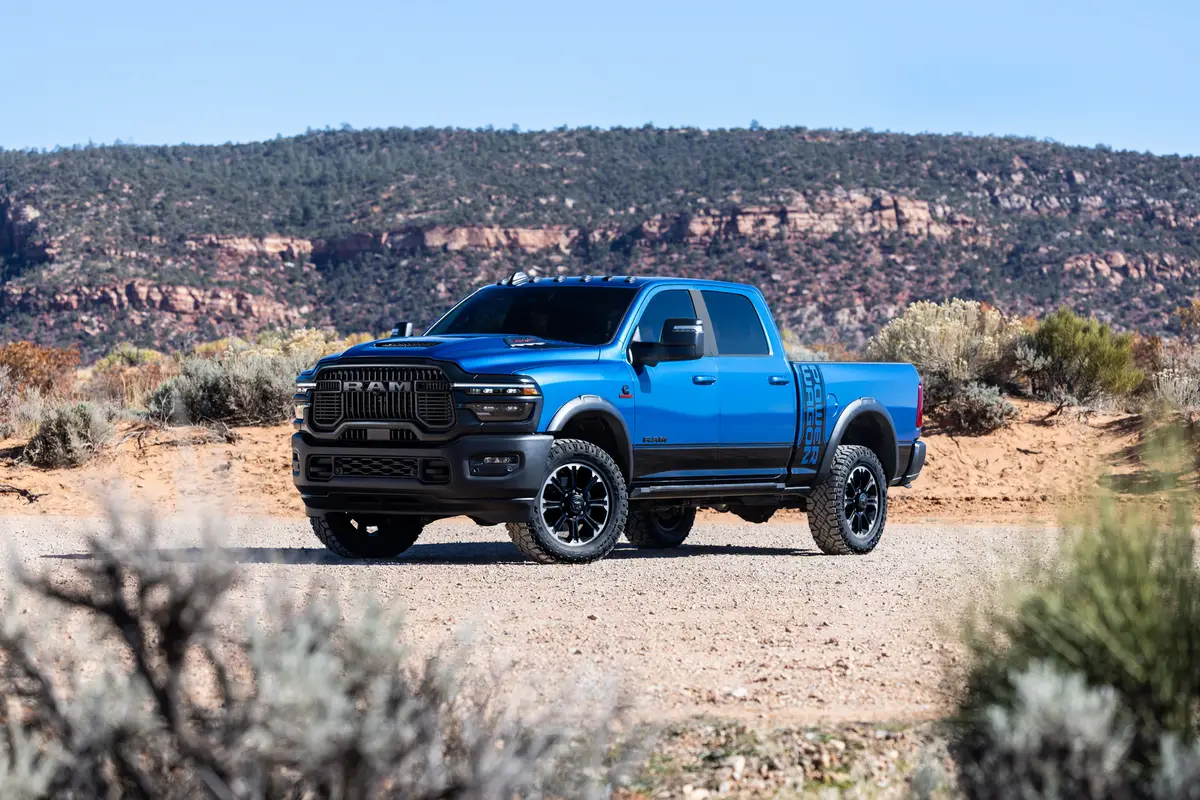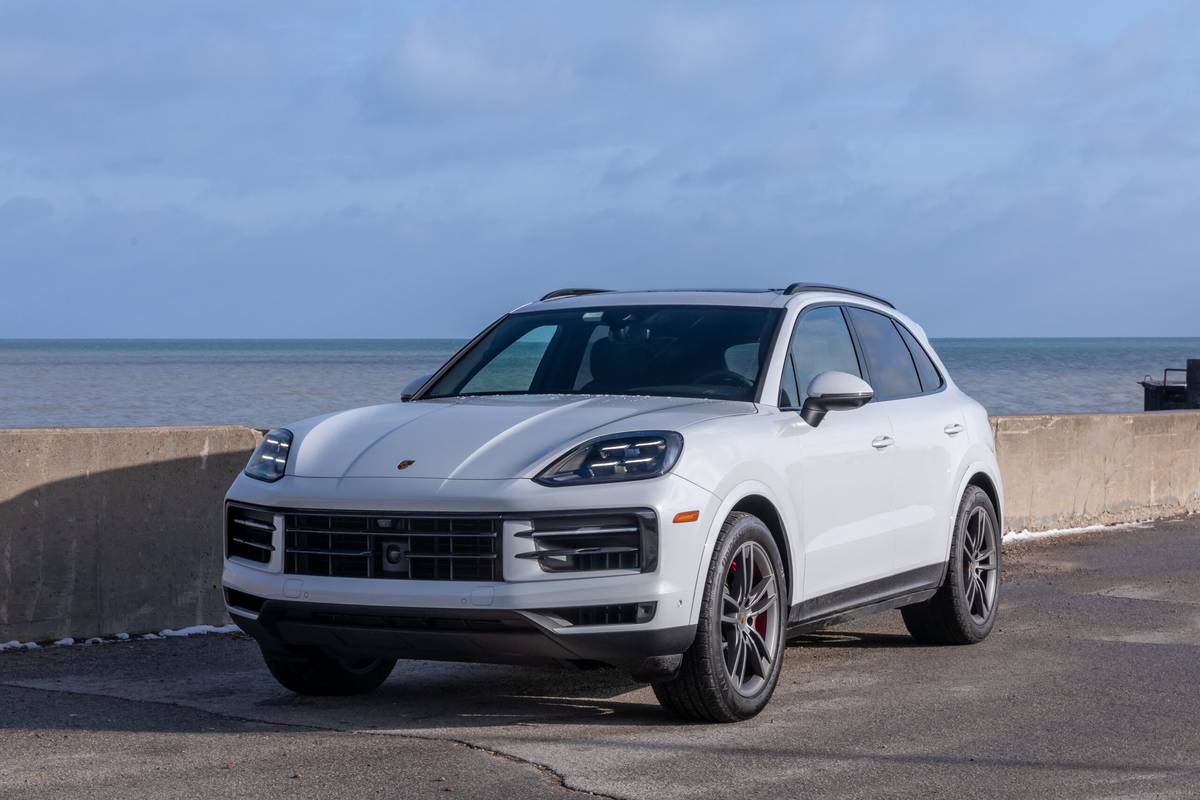Cincinnati.com's view
(Sound of feminine squealing): Oooh, what IS that? Oooh, that’s cute! How much IS it?
That scene played out a couple of times while I was testing Toyota’s new Matrix “cross-over utility vehicle,” (CUV) as they wish to call it.
I hadn’t been sure what kind of reception the novel-looking piece would get. I like it, but I am a sucker for anything that stands apart from the ocean of look-alikes with which we are inundated.
Going for a young audience, Toyota’s California design team decided to be a bit daring and give a funky look to what is at core a utilitarian vehicle.
It should be no surprise that from some angles, the Matrix evokes a bit of PT Cruiser feel – the low, heavily airdammed front, the pinched rear windows, the downsloping roof – but instead of coming across as a retro caprice, it seems futuristic.
Based on the platform used in the new Corolla, it, too is called a 2003. Unlike the Corolla, which is built in California along with the Pontiac Vibe, the Matrix is pieced together at the Cambridge, Ontario, plant.
It is presented in three grades: Standard, XR and XRS. The XRS is a breed apart, because it alone has the hot, 180-hp version of the engine. It will be reviewed separately in the near future.
The Standard series begins at an eye-opening $14,670 (plus freight). That would be pretty shabby, eh? Not exactly. It has a five-speed manual transmission, hefty 16-inch wheels, power steering and brakes, tilt wheel, remote outside mirrors, rear defogger, 60/40 fold-down rear seats, the same luminescent gauges as its richer brethren, intermittent wipers, cargo nets, two power taps, a four-speaker AM-FM-CD stereo and air conditioning with microfiltration.
(Gone are the days of the “stripper,” a deliberately-uglied series for which even a cigarette lighter was an option, to say nothing of a stereo and air.)
An automatic transmission will cost you an extra $800 and a little gas mileage – if you’re out for economy and fun, isn’t it time you learned to shift?
I would urge serious consideration of the antilock brakes ($300 extra) and also, in view of the weight class, side air bags ($250). If you followed those prescriptions, you’d have an awfully nice car (excuse me, CUV) for under 16 grand.
The car offered up for this test was the fancier XR series.
If you feel so self-indulgent, be prepared for a big price leap – base price on an XR with manual trans is $16,980. The extra $2,310 gets you body-colored, instead of black, outside mirrors, rocker panels and door handles. No big deal there, but you also get power windows and door locks (with remote keyless entry), vertical seat adjuster, fabric rear-door trim, sport steering wheel, intermittent rear wiper and a 115-volt power outlet. To which I say, Where’s the beef?
Mechanically, the car is the same as its poor relation.
At both the XR and XRS levels, you can move up from front-wheel drive to all-wheel drive for a premium of about $1,500, not bad. I’ll round one of those up when snow again becomes likely in the Miami Valley.
The propulsion unit for both XR and standard-grade machines is a four-cylinder, 1.8-liter twin-cammer with variable valve timing. For all its sophistication, it makes just 130 hp (@6,000 rpm) and 125 foot-pounds of torque (@4,200). I assume it was tuned to qualify this as an ultra-low-emissions-vehicle, which is laudable. Mated to the automatic in the tester, however, it was disappointing.
The five-speed manual, with an extra gear and less weight, would be a better choice. With the 2,700-pounds-or-so curb weight, the Matrix still would not deliver the street-rod thrills its bodywork hints at. Breaking 10 seconds in the 0-60 run will be just a dream with this piece.
The engine doesn’t feel alive until the tach hits 4,000, and to convince it to run out that far takes a very determined shove on the gas pedal with the automatic, which seems to have been calibrated by a Mobil economy run veteran.
But on the other side of the ledger . . . it is quite happy with 87-octane unleaded, despite its snappy 10:1 compression ratio, and it wins EPA economy ratings of 28 mpg city, 33 highway with the automatic, 30/35 with the manual.
In the real world of economy cars, those numbers are far more important than the ones derived at the drag strip. Trying to wring the ultimate performance from the platform, with a relatively green engine, I used up gas at the rate of 28.1 miles to the gallon.
Launch feel was rather anemic, but one the engine got to spinning, it was responsive enough for practical purposes. Top gear is fairly high, so I was glad to have the convenience of an overdrive lockout in the form of an electrical switch on the floor-mounted shift lever. The O/D off indicator light, though somewhat lost amid the instruments, was welcome.
The instruments themselves should be paradigms of legibility. They use brightly lit red numerals and needles against a black background. I found, however, with the moonroof on the tester, ambient light struck the upwardly-canted gauge coverings in such a way as to render the readouts somewhat hard to see. Accessory info, such as odometer and outside temperature, was conveyed by small LCDs which were totally obscured in the daytime.
The interior design of the XR grade would not be out of place in a vehicle costing twice as much. Numerous textures and colors are used, both in plastic and metal, including some bright chrome instrument surrounds, but they blend harmoniously to produce a high-end sporty ambience.
Though above-average in height and width, I did not feel pinched behind the wheel, although, upon entry, I wished that it tilted more than just a little.
One of my impromptu panelists, inspecting the second-class cabin, remarked, “Oooh, I could get my three kids back there.” Indeed, there are three seatbelts. The space, I was surprised to find, was sufficient for a six-footer for short hauls, at least. Two adults would fit in the back, if prepared for bonding.
Aft of the passenger area there’s 21.8 cubic feet of space. Drop the rear seats and you have 53 cubic feet to fill. The PT Cruiser, the other conspicuous example of funk plus function, has 64 c.f.
Ride and handling were both very good. There was an occasional bit of harshness when the tires encountered a nasty pavement problem, but on the whole, the feel was smooth and well-controlled.
The Goodyear GS-A tires were tenacious on dry pavement, pretty good in the rain, breaking their hold gently and progressively.
The steering is light and fairly swift, but I found no excess of attention was required to maintain a course on highway or byway.
The noise level was on the low end of the moderate range, even at 70 mph.
A vagrant dog provided the first test of the antilock brakes (he waddled on as I slalomed), and subseque nt simulations reaffirmed their potency. Pedal feel was surprisingly crisp, considering the XR has rear drums, and braking force was easily modulated.
The stereo was middling in tuner sensitivity, above average in clarity and tonality.
The 115-volt power tap is novel. The owner’s manual reveals that it can only be used with devices requiring less than 100 watts, and not with those which require a start-up jolt, such as cathode-ray TVs, refrigerators, pumps, tools . . . nor with precision measuring devices.
The spare tire is of the part-time variety, which opens up a small amount of secure storage adjacent to it, under the load floor.
The rear hatch opens upward, but the remote control, with two pokes of the button, allows the window to be flipped open separately, a very desirable arrangement for dealing with cargo and dogs.
Unfortunately, as with the Corolla, I’m a bit in front of the feds and the insurance folks; neither group has smashed a Matrix yet. I can’t give an unqualified endorsement without those data, but I DO have a lot of faith in Toyota’s ability to score high. With that caveat, Matrix gets an A-. The tester had antilock, side air bags, alloy wheels, and sunroof grafted on, for a total, with freight, of $19,175. Payments on that vehicle would be $389, assuming 20 percent down, 48 payments and 10 percent interest. Unfortunately, Edmunds.com reports that Matrices are going for sticker right now.
Latest news



